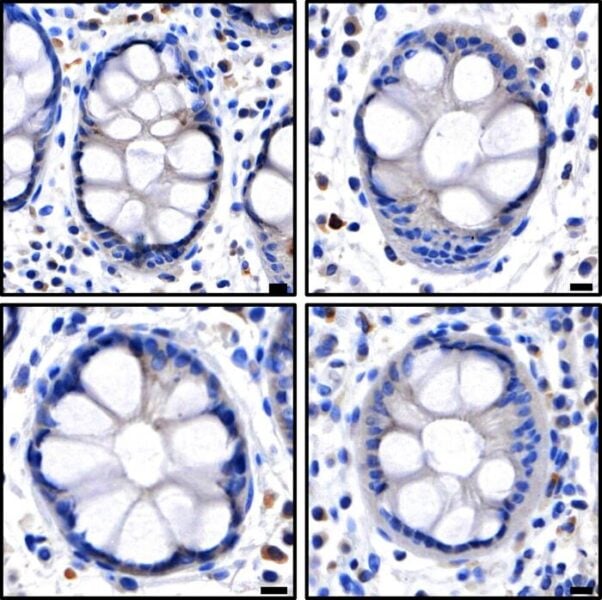A new study from the Walter and Eliza Hall Institute (WEHI) has revealed new automated methods to detect necroptosis, a key factor in numerous inflammatory diseases. The research, published in EMBO Molecular Medicine, could revolutionize how we diagnose and treat conditions like psoriasis, arthritis, and inflammatory bowel disease.
Necroptosis is a form of cell death that plays a crucial role in removing unwanted or dangerous cells from the body. However, when this process goes awry, it can trigger various inflammatory conditions. Until now, pinpointing exactly when and where necroptosis occurs in patients has been challenging.
Dr. Andre Samson, co-leader of the study, expressed excitement about the breakthrough: “It is so exciting to finally be able to catch necroptosis in the act.” The new techniques precisely located necroptosis in patients with ulcerative colitis or Crohn’s disease, providing critical insights into how this cell death process contributes to inflammatory diseases.
Cracking the Necroptosis Code
The research team developed a set of fully automated diagnostic techniques, including the use of liquid handling robots, to identify necroptosis accurately. These methods can be easily reproduced in hospitals worldwide, offering hope for new treatment approaches.
The study revealed that necroptosis responds not only to inflammation but also to bacterial changes and immune issues. Dr. Samson noted, “Among other results, we also found that when proteins like Caspase-8 cluster together in cells, it’s a sign of necroptosis.”
This discovery marks a significant step toward developing new medicines that could treat a wide range of inflammatory diseases by targeting necroptosis. “It helps us understand when and where necroptosis happens, both in healthy and disease situations,” Dr. Samson added.
A Global Effort for a Common Goal
The research involved a meticulous process of optimizing over 300 different experimental conditions to arrive at a set of reliable robotic methods. Professor James Murphy, study co-leader and head of WEHI’s Inflammation division, attributed the success to a combination of decades of cell death research, cutting-edge technology, and a diverse global team.
“We used multiple techniques, including state-of-the-art spatial transcriptomics to scrutinise and verify our results,” Prof Murphy said. “The size and diversity of the team was also noteworthy and critical to uniting invaluable perspectives and expertise.”
The team included PhD students, six departments from WEHI spanning various disciplines, and collaborators from the Royal Melbourne Hospital and Cornell University in New York.
The researchers refer to their work as an “atlas of necroptosis” because it provides a precise map of which cells in the body are capable of undergoing this form of cell death. “We can now confidently visualise where and when necroptotic cell death can happen in the body,” Prof Murphy explained.
A key goal of the study was to develop methods that could be easily replicated in both laboratory and clinical settings. Prof Murphy emphasized, “Most importantly, researchers and clinicians around the world will now be able to use these new methods, especially as liquid handling robots for immunostaining are common in hospitals and pathology departments worldwide.”
The team plans to extend their techniques to investigate other gut diseases, such as celiac disease, and a broader range of inflammatory conditions affecting the skin, lungs, and kidneys. This research opens new avenues for understanding the intricate mechanisms of cell death and its connection to inflammatory diseases, potentially improving the lives of millions of people worldwide.
If our reporting has informed or inspired you, please consider making a donation. Every contribution, no matter the size, empowers us to continue delivering accurate, engaging, and trustworthy science and medical news. Independent journalism requires time, effort, and resources—your support ensures we can keep uncovering the stories that matter most to you.
Join us in making knowledge accessible and impactful. Thank you for standing with us!

